Northeast Vietnam Itinerary 10 Days: Things to do
Northern Vietnam is a land of breathtaking landscapes, rich history, and diverse cultures. While many travelers visit Hanoi, Halong Bay, and Sapa, the Northeast Vietnam Itinerary 10 Days takes you beyond the usual tourist spots, deep into a region of dramatic limestone mountains, winding rivers, and remote ethnic villages. This part of Vietnam remains largely untouched, offering an authentic experience far from the crowds.
This itinerary takes you through some of Vietnam’s most spectacular scenery. Along the way, you will meet ethnic minority communities, explore traditional markets, and stay in local homestays that offer a glimpse into rural life. Let us guide you through a 10-day journey across Northeast Vietnam, detailing the best places to visit, unique experiences to try, and why this adventure is worth taking.
What’s Special About Northeast Vietnam?
Northeast Vietnam is one of the most stunning and culturally rich regions of the country. Located in the far north, it is home to dramatic limestone mountains, deep valleys, winding rivers, and remote ethnic villages. Northeast Vietnam remains mostly untouched by mass tourism, making it a perfect destination for travelers looking for an off-the-beaten-path adventure.
This region is known for its breathtaking landscapes, from the emerald waters of Halong Bay to the towering Ban Gioc Waterfall. It is also home to diverse ethnic minority communities, each with its own traditions, architecture, and way of life. Traveling through the Northeast means encountering warm hospitality, unique local markets, and a slower pace of life that allows you to fully appreciate the beauty of Vietnam’s rural countryside.
Highlights of The Northeast
One of the most striking features of Northeast Vietnam is its varied landscapes. You will see everything from towering karst mountains in Cao Bang to endless terraced rice fields in Hoang Su Phi. Each destination offers a unique experience, from stunning landscapes to rich ethnic heritage.
Ba Be Lake: Vietnam’s largest natural freshwater lake, surrounded by limestone mountains, dense forests, and peaceful ethnic villages. It’s a perfect place for boat trips, cave exploration, and nature walks.
Cao Bang: A province known for its dramatic karst formations, lush valleys, and important historical sites. The highlight is Ban Gioc Waterfall, Vietnam’s most spectacular waterfall, located on the border with China.
Ban Gioc Waterfall: One of the most stunning waterfalls in Southeast Asia, where turquoise water cascades down limestone cliffs surrounded by lush greenery. Nearby, Nguom Ngao Cave features incredible rock formations.
Ma Pi Leng Pass: One of Vietnam’s most famous mountain passes, offering breathtaking views of the Nho Que River and the towering peaks of the Dong Van Karst Plateau. It is part of the legendary Happiness Road, built by ethnic minorities in the 1960s.
Meo Vac: A remote mountainous town where you can experience the colorful Sunday market, where ethnic groups from different villages gather to trade goods, socialize, and wear their traditional outfits.
Lung Cu Flag Tower: The northernmost point of Vietnam, offering panoramic views of China’s border and the surrounding mountains. It is a symbol of national pride.
Quan Ba Twin Mountains: Also known as "Fairy Bosom," these two perfectly round hills create a striking landscape near the gateway to Ha Giang.
Hoang Su Phi: Famous for its breathtaking terraced rice fields, especially beautiful during harvest season. This is one of the best trekking destinations in Vietnam, offering deep cultural immersion in ethnic minority villages.
Thac Ba Lake: A peaceful reservoir dotted with hundreds of small islands. It’s a great place to relax, take a boat trip, and experience the slow-paced rural life of the Dao people.
Northeast Vietnam Itinerary
Day 1: Hanoi - Ba Be
Day 2: Ba Be - Cao Bang
Day 3: Cao Bang - Ban Gioc - Nguom Ngao - Cao Bang
Day 4: Cao Bang - Bao Lac
Day 5: Bao Lac - Meo Vac
Day 6: Meo Vac - Lung Cu - Twin mountain - Quan Ba - Ha Giang
Day 7: Ha Giang - Hoang Su Phi
Day 8: Hoang Su Phi—Trekking
Day 9: Hoang Su Phi - Thac Ba Lake
Day 10: Thac Ba - Duong Lam - Hanoi
Highlights of The Itinerary
This 10-day journey through Northeast Vietnam takes you to some of the most spectacular and remote destinations in the country. You will explore the peaceful waters of Ba Be Lake, marvel at the beauty of Ban Gioc Waterfall, and cross the legendary Ma Pi Leng Pass. The landscapes change dramatically along the way, from the lush forests of Ba Be to the high limestone plateaus of Ha Giang.
Beyond the scenery, this itinerary is also a cultural experience. You will stay in traditional homestays, meet ethnic minority families, and visit bustling local markets where villagers trade everything from livestock to handmade textiles. Unlike other regions of Vietnam, where tourism is more developed, the Northeast remains authentic and less crowded, allowing you to experience the true essence of rural life.
This itinerary is designed for travelers who want to go beyond the usual tourist spots and discover the hidden gems of Vietnam. If you’re looking for a trip filled with adventure, cultural immersion, and unforgettable landscapes, Northeast Vietnam is the perfect destination.
Northeast Vietnam Itinerary: 10 Days of Things to Do
Day 1: Hanoi - Ba Be
As your journey starts, you leave Hanoi’s hustle behind and head north toward Bac Kan. The drive takes about six hours; you’ll pass through small villages, rice fields, and winding mountain roads before reaching Ba Be, Vietnam’s largest natural freshwater lake.
Ba Be is a peaceful retreat surrounded by limestone cliffs and dense forests. The best way to experience it is by taking a boat ride across the emerald-green lake. You can visit Puong Cave, a limestone cavern with thousands of bats, or stop by An Ma Temple, a sacred site on a small island. If you have time, go for a short trek through the national park to spot exotic birds and explore local villages. At night, stay in a homestay by the lake, where you can enjoy home-cooked meals and experience the warmth of Tay ethnic hospitality.
Day 2: Ba Be - Cao Bang
Wake up to the sound of nature and enjoy a simple breakfast before setting off for Cao Bang, a mountainous province known for its dramatic landscapes and remote ethnic villages. The drive takes about five hours, but the changing scenery keeps it interesting.
Cao Bang is a land of rugged beauty, home to karst mountains, deep valleys, and hidden waterfalls. One of the highlights of the area is the Pac Bo historical site, where Ho Chi Minh lived when he returned to Vietnam in 1941. You can visit the Lenin Stream, a peaceful spot where he used to work and plan revolutionary activities.
In the afternoon, explore some of Cao Bang’s lesser-known attractions, like the Phia Oac-Phia Den National Park, which offers excellent trekking opportunities through dense forests and cloud-covered peaks. After a long day, settle into your accommodation in Cao Bang City, where you can find a few local restaurants serving specialties like roasted duck.
Day 3: Cao Bang - Ban Gioc - Nguom Ngao - Cao Bang
Today, you’ll visit one of the most breathtaking natural wonders in Vietnam: Ban Gioc Waterfall. Located on the border with China, Ban Gioc is the largest waterfall in the country, cascading down in multiple layers over limestone cliffs. The sight of the turquoise water crashing down into the jade-green pool below is mesmerizing. You can take a bamboo raft to get closer to the falls and feel the mist on your face.
Just a short drive away, Nguom Ngao Cave is another must-visit spot. This limestone cave stretches for several kilometers, with incredible stalactites and stalagmites forming weird shapes. Some formations resemble corals, waterfalls, and mythical creatures.
After visiting Ban Gioc and Nguom Ngao, return to Cao Bang for the night. If you have time, take a walk through the city’s night market, where you can try local grilled dishes and experience the town’s nightlife.
Day 4: Cao Bang - Bao Lac
The road from Cao Bang to Bao Lac takes about 3 hours, winding through valleys, mountains, and remote villages. Bao Lac is a small town, located about 103 km from the city, home to groups like the Tay, Nung, Dao, and the rare Black Lolo people.
Upon arrival, you’ll have the special opportunity to stay overnight in a Black Lo Lo household. The Black Lolo, one of Vietnam’s smallest ethnic groups, have managed to preserve their traditions despite modernization. Staying in their home, you’ll get to experience their daily life, tasting their traditional food and learning about their customs. This kind of cultural exchange is rare and truly special.
In the evening, sit by the fire, listen to stories, and enjoy the peaceful atmosphere of the mountains. It’s a simple yet unforgettable experience that connects you to the heart of Northeast Vietnam.
Day 5: Bao Lac - Meo Vac
Say goodbye to your hosts in Bao Lac and set off for one of the most spectacular drives in Vietnam. Today, you’ll follow the Happiness Road, an engineering marvel that took years to carve through the mountains. This road connects the 4 districts of Ha Giang province and offers breathtaking views at every turn.
One of the biggest highlights is the Ma Pi Leng Pass, often considered the most beautiful mountain pass in Vietnam. Standing at the viewpoint, you’ll see the Nho Que River winding like a jade ribbon through the deep canyon below. If you’re feeling adventurous, take a boat ride on the river, where you’ll be surrounded by towering cliffs and pure wilderness.
After soaking in the scenery, continue to Meo Vac. Spend the night in Meo Vac, where you can rest before continuing your journey deeper into the mountains.
Day 6: Meo Vac - Lung Cu - Twin mountain - Quan Ba - Ha Giang
Leaving Meo Vac in the morning, you will drive through some of the most spectacular landscapes in Ha Giang province. Your first stop is Lung Cu, the northernmost point of Vietnam. Here, you can climb the Lung Cu Flag Tower and enjoy panoramic views of the rugged mountains and terraced fields below. The surrounding area is home to the Lo Lo ethnic minority, who live in traditional earthen houses.
On the way to Ha Giang city, you will pass by Quan Ba and the famous Twin Mountains (Fairy Bosom), two round hills that stand out among the limestone formations. The road continues through stunning karst landscapes before reaching Ha Giang city in the evening. After a long day of driving, you can relax and enjoy a warm meal at a local restaurant before resting for the night.
Day 7: Ha Giang - Hoang Su Phi
After breakfast, you will head west toward Hoang Su Phi. Hoang Su Phi remains off-the-beaten-path, offering a more authentic and peaceful experience. The drive takes around four hours, but the ever-changing scenery makes it an enjoyable journey.
Hoang Su Phi is home to many ethnic groups, including the Dao, Tay, and Nung, each with their own traditions and unique way of life. One of the best things to do here is trekking through the rice terraces, where you will see farmers tending to their fields and water buffalo grazing along the slopes. If you visit during harvest season (September–October), the golden fields create a truly magical sight.
Tonight, you will stay in a lodge surrounded by mountains and rice paddies. The peaceful setting, combined with the cool mountain air, makes it a perfect place to unwind after a day of exploring.
Day 8: Hoang Su Phi—Trekking
Spending a full day trekking in Hoang Su Phi allows you to explore deeper into the region’s natural beauty and rich culture. You can trek through remote villages, where you will meet local families and see how they weave, farm, and live in harmony with nature. The trails take you through bamboo forests, tea plantations, and hidden waterfalls, making it an adventure filled with variety. For those who love photography, Hoang Su Phi offers some of the best landscapes in Vietnam.
In the afternoon, you can relax at your lodge or enjoy a well-deserved massage and bath using Red Dao’s herbal medicine. In the evening, you’ll enjoy a homemade meal with grilled meats, wild vegetables, and fragrant sticky rice before joining a karaoke session with the locals.
Day 9: Hoang Su Phi - Thac Ba Lake
After breakfast, you will begin your journey to Thac Ba Lake, one of the largest freshwater lakes in Vietnam. The drive takes about five hours, passing through small towns and green hills before arriving at this peaceful destination.
The best way to explore the lake is by motorized boat. As you glide across the calm waters, you will see hundreds of small islands covered in lush forests, as well as local fishermen casting their nets.
In the evening, you will stay at a lakeside homestay, where you can enjoy a traditional meal prepared by your hosts. The peaceful environment and the gentle sounds of nature make Thac Ba a perfect place to relax before heading back to Hanoi.
Day 10: Thac Ba - Duong Lam - Hanoi
On your final day, you will leave Thac Ba and make a stop at Duong Lam, an ancient village just outside of Hanoi. Duong Lam is one of the best-preserved traditional villages in Vietnam, known for its centuries-old houses made of laterite stone. Some houses date back to as early as the 17th century. Some households have rows of ceramic jars laid out in their yard, filled with fermented soy sauce, which is also a regional specialty. If you’re interested in history, Duong Lam is also the birthplace of two Vietnamese kings, Ngo Quyen and Phung Hung, whose temples you can visit.
After exploring Duong Lam, you will return to Hanoi, completing your incredible 10-day journey through Northeast Vietnam.
How to Get Around in Northeast Vietnam?
Traveling through Northeast Vietnam requires careful planning due to its mountainous terrain and remote locations. The best way to explore the region is by private car or motorbike, depending on your comfort level and adventure spirit.
A private car with a driver is the most convenient option, especially for long distances between destinations. The roads in Northeast Vietnam are winding and often narrow, so having an experienced local driver ensures a smoother and safer journey. You can also make stops along the way to enjoy the landscapes and take photos. If you are traveling in a group, hiring a private car can be more economical and comfortable than relying on public transportation, which is limited in this region.
For travelers who love adventure, riding a motorbike is a fantastic way to experience Northeast Vietnam at your own pace. The roads, especially along Ma Pi Leng Pass, offer some of the most scenic rides in Vietnam. However, motorbiking in this region is only recommended for experienced riders due to the steep slopes, sharp turns, and unpredictable weather conditions. If you choose this option, make sure to rent a high-quality bike, wear protective gear, and check weather conditions before starting your journey.
When to Visit Northeast Vietnam?
The best time to visit Northeast Vietnam depends on what kind of experience you are looking for. The ideal months are from September to November and March to May, when the weather is pleasant and the landscapes are at their most beautiful.
From September to November, the terraced rice fields in places like Hoang Su Phi turn golden, creating stunning scenery. The cool, dry weather makes trekking and outdoor activities comfortable. March to May is another great period, with mild temperatures, blooming flowers, and clear skies, perfect for sightseeing and photography.
Winter, from December to February, can be cold, especially in the mountainous areas. If you enjoy misty landscapes and don’t mind the chill, this is a unique time to visit, as the region feels more mystical.
One season to avoid is July, due to the risk of heavy rain and landslides. The mountainous roads can become dangerous, and landslides sometimes cause travel disruptions. If you’re planning a trip in the summer, be sure to check the Northeast Vietnam weather regularly and prepare for sudden changes in conditions.
Final Words
If you are looking for an authentic, off-the-beaten-path experience, this Northeast Vietnam Itinerary 10 Days is the perfect choice. Instead of following the usual tourist trails, you will witness the raw beauty of Vietnam, experience its rich traditions, and create memories that will last a lifetime.
Let us help you plan your journey and ensure a smooth, unforgettable trip. Book a tour with Vietnam Original Travel today, and get ready to explore one of Vietnam’s most incredible regions!
>>> Top 15 destinations in Northern Vietnam to discover absolutely
Send us your comments about : Northeast Vietnam Itinerary 10 Days: Things to do
Required fields *
You might also be interested
Our clients’ favorite journeys to customize
Looking for inspiration? Discover some of our most popular tours in Vietnam, highly appreciated by our travelers. They are a great starting point to help you choose the perfect journey through Vietnam, Laos, Cambodia, Myanmar, or Thailand—whether you’re traveling solo, as a couple, with family, or with friends.
And since this is your trip, feel free to customize it just the way you like!
Vietnam Cambodia Itinerary 14 Days
Hanoi – Hoa Binh – Mai Chau – Ninh Binh – Halong bay – Hue - Danang – Hoian – Saigon – Ben Tre - Can Tho – Saigon - Siem Reap Angkor - Tonlé Sap - Siem Reap – Ta Prohm - Departure
Vietnam 14 Day Itinerary
Vietnam 14-day itinerary covers the country’s top highlights and quintessential experiences for an unforgettable journey.
Honeymoon Tour Pakcages In Vietnam 12 Days
Saigon Arrival - City Tour – Mekong Delta – Danang – Hoian - by flight - Da Nang – Hanoi - by flight – Halong - overnight on junk – Departure
Authentic Hoang Su Phi Trekking Tours
Hoang Su Phi trekking tours take you to stunning terraces, meet few tourists, connect with locals and enjoy authentic culture.
Best Nha Trang Beach Tour 4 Days
Saigon/Hanoi – Nha Trang relaxation – Saigon/Hanoi – Departure
Mekong Delta Bike Tour Itinerary 7 Days
Cycle through the Mekong Delta in 7 days, discovering floating markets, orchards, craft villages, and tranquil green islands.
Are you interested in this tour?



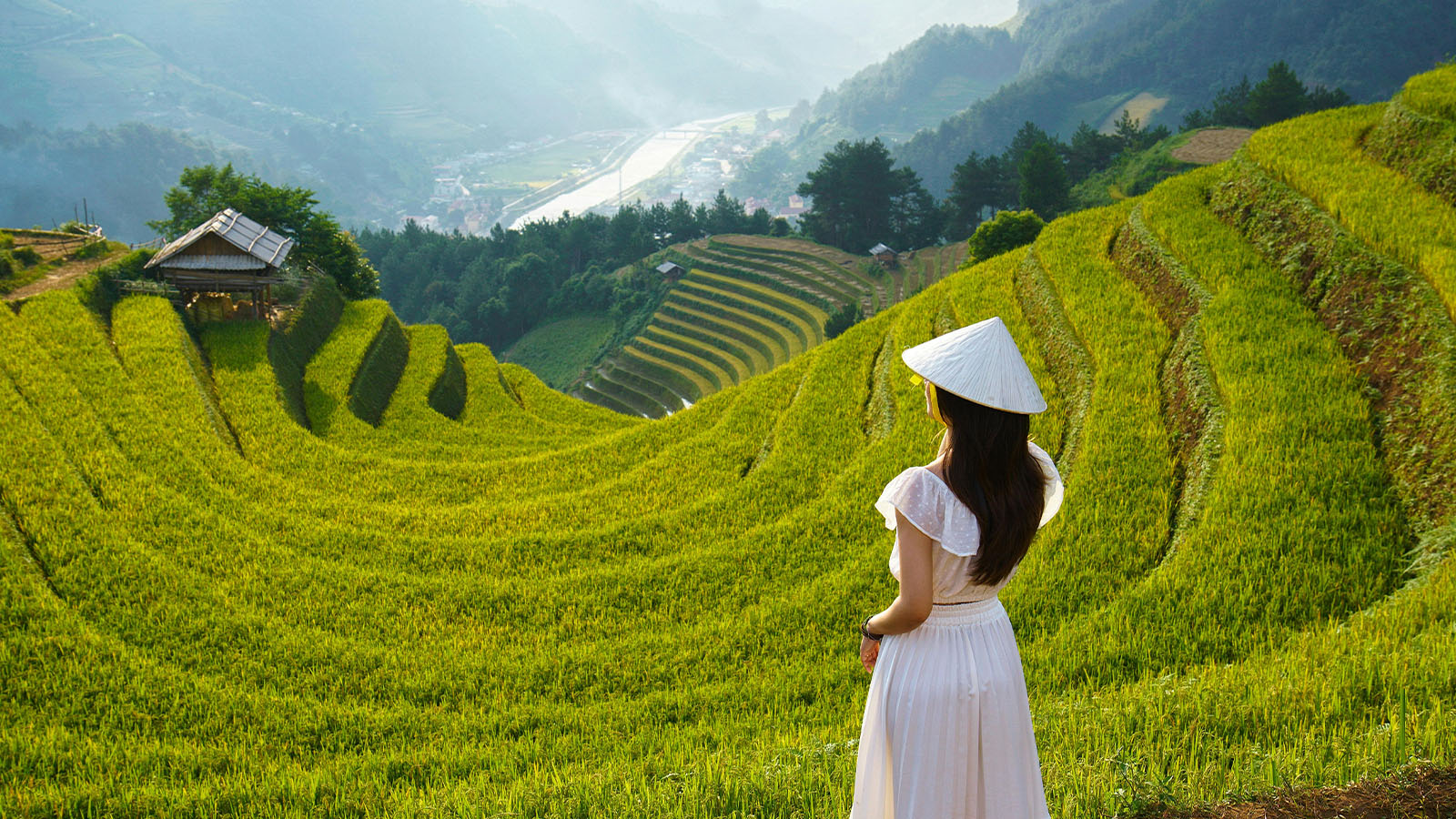

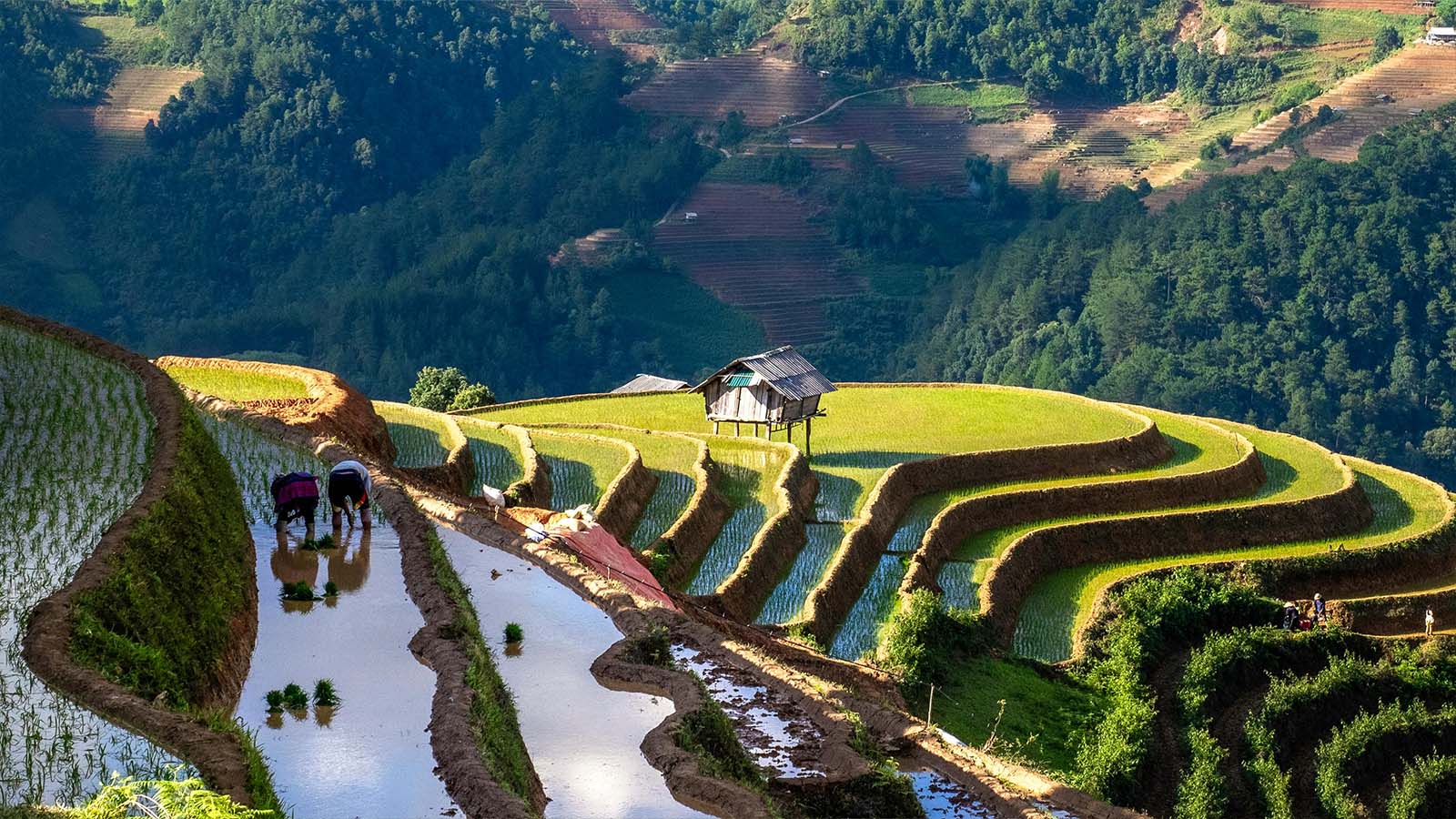
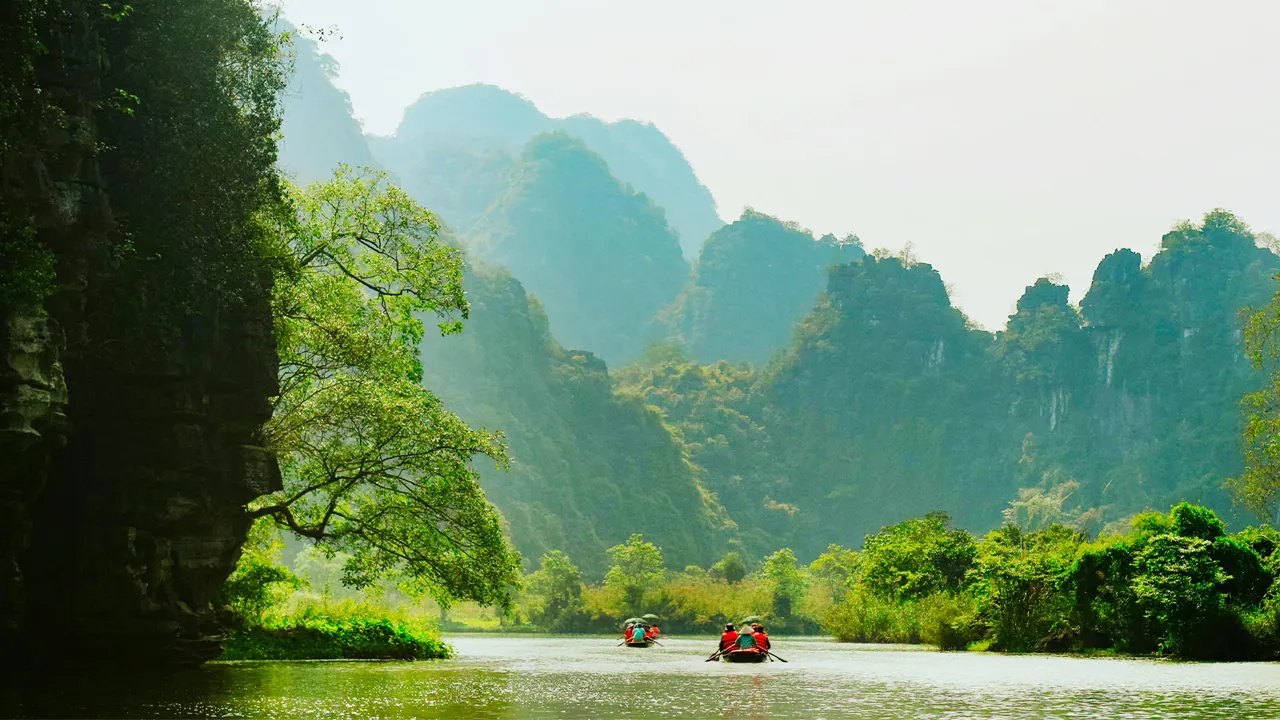








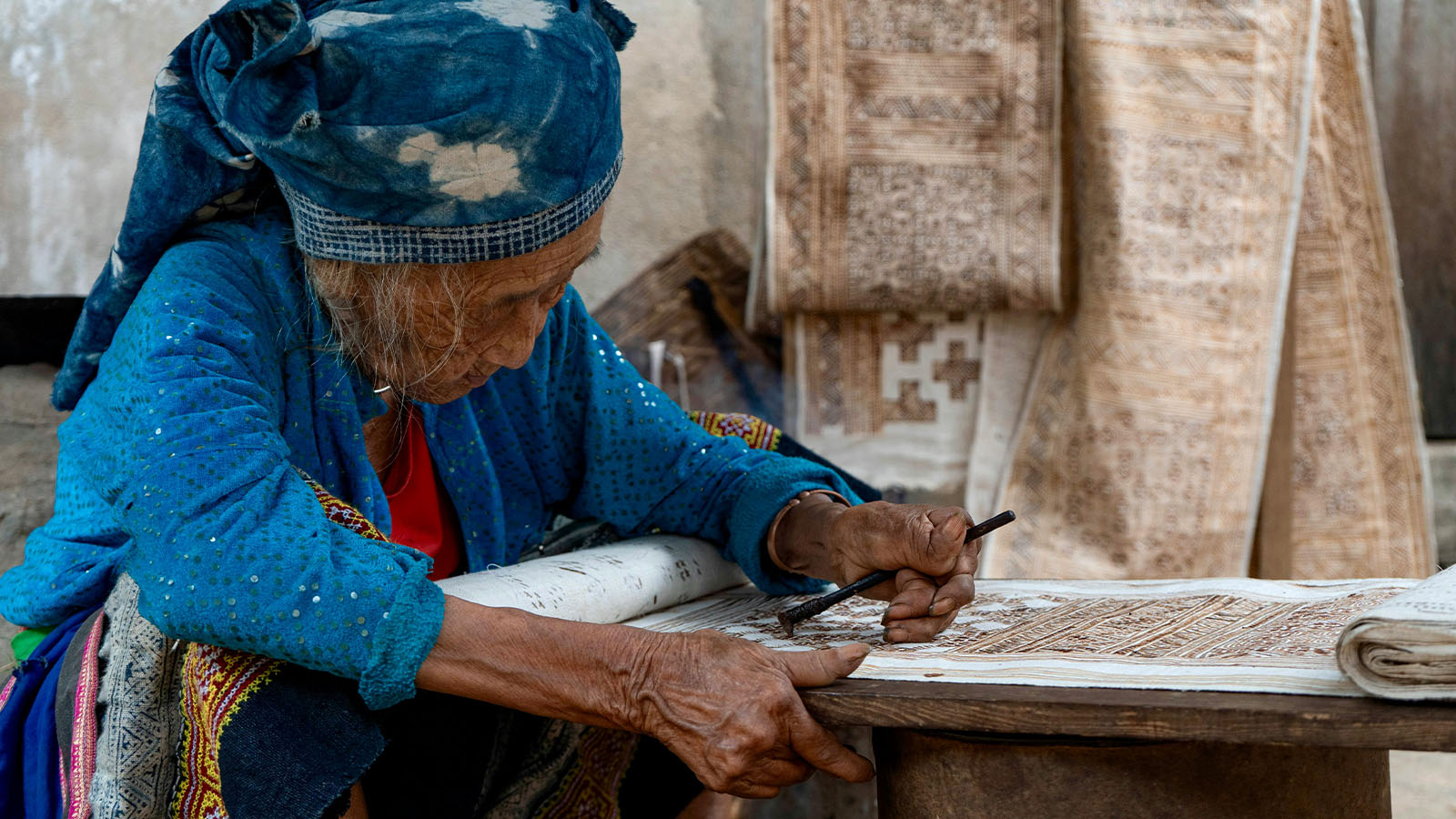
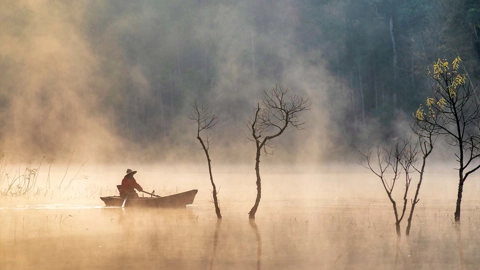
















Comment